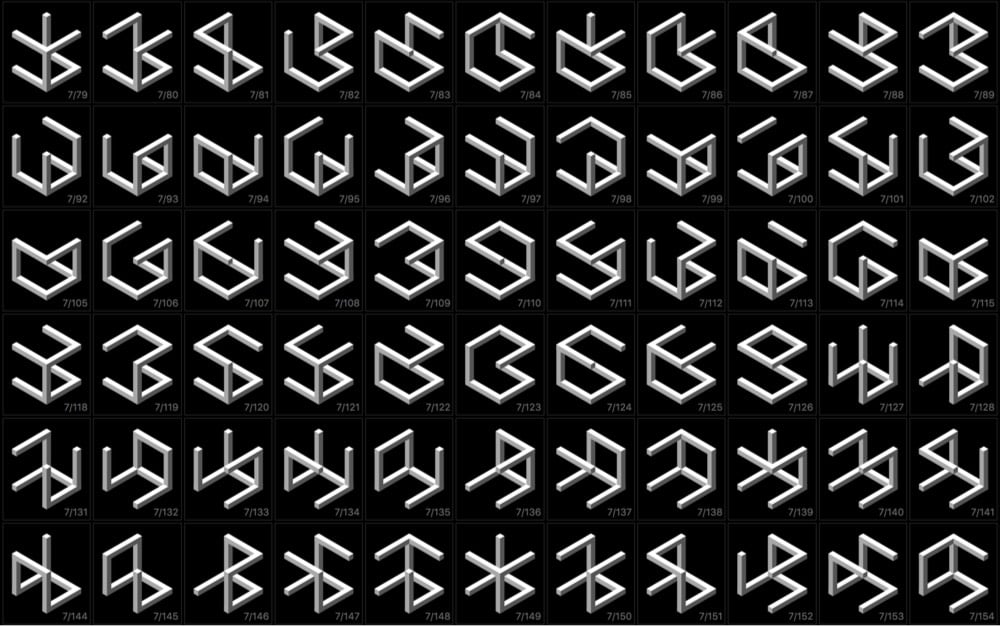Incomplete Open Cubes Revisited

In Incomplete Open Cubes Revisited, Rob Weychert extends a 1974 project by Sol LeWitt called Variations on Incomplete Open Cubes that displayed 122 different ways that cubes with one or more edges missing could be depicted. Weychert’s project expands the number of incomplete cube possibilities to 4,094 by challenging LeWitt on three aspects of the original: dimensionality, contiguity, and rotation. See the about page for the explanation.
All of LeWitt’s cubes are contiguous; each part is connected to at least one other part. Since the cubes were intended to be physically fabricated, this appears to be a logistical concern: In the physical world, a detached part floating in space would be impossible. (It’s not clear, however, why detached, grounded parts were not permitted.)
Here’s how Weychert did it, complete with downloadable source code.





Stay Connected